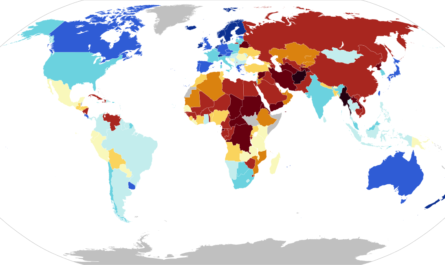Sado
Island
is
Japan’s
sixth
largest
island.
Located
in
the
eastern
region
of
the
Sea
of
Japan,
this
island
features
a
tripartite
physical
geography.
This
means
that
the
island
has
three
distinctive
landform
features:
two
mountain
ranges
that
sandwich
an
alluvial
plain.
Both
mountain
ranges
on
Sado
Island
were
formed
by
volcanic
activity
about
20
million
years
ago.
Main
physical
geography
of
Sado
Island
To
the
north
is
the
Ōsado
range.
Found
on
this
range
is
Mount
Kinpoku,
the
highest
point
on
Sado
Island
with
a
peak
of
3,845
feet
(1,172
meters).
South
of
the
Osado
range
is
the
Kuninaka
Plain.
The
Kunikaka
Plain
is
a
relatively
flat,
inland
area
on
Sado
Island.
The
12-mile
long
Kokufugawa
River flows
through
this
plain
before
emptying
into
Mano
Bay.
Kokufugawa
River
is
the
longest
river
on
Sado
Island.
Lake
Kamo
lies
at
the
eastern
end of
Kuninaka
Plain.
On
the
other
side
of
the
Kuninaka
Plain
is
the
Kosado
range.
This
range
is
lower
in
altitude
than
the
Ōsado
range
–
the
highest
peak
Mount
Ōjiyama
with
an
elevation
of
2,119
feet
(646
meters).
Free
weekly
newsletter
Fill
out
your
e-mail
address
to
receive
our
newsletter!
By
entering
your
email
address
you
agree
to
receive
our
newsletter
and
agree
with
our
privacy
policy.
You
may
unsubscribe
at
any
time.

Islands’
main
physical
geography
features
are
two
mountain
ranges
with
a
plain
in
between.
Image:
Landsat
8,
April
22,
2024,
NASA.
Mines
on
Sado
Island
Geologic
processes
from
the
volcanic
formation
of
both
mountain
ranges
on
Sado
Island
also
produced
deposits
of
metals
including
gold
and
silver.
The
Aikawa-Tsurushi
Gold
and
Silver
Mine
located
in
the
Ōsado
range
dates
from
the
1500s.
The
Nishimikawa
Placer
Gold
Mine
located
in
the
Kosado
range
was
mined
starting
in
the
1100s.

created
by
Andō
Hiroshige
in
1853
showing
workers
at
a
gold
mine
on
Sado
Island.
Source:
loc.gov
–
jpd
01357.
More
geography
of
Japan
articles
Go to Source
Author: Caitlin Dempsey
